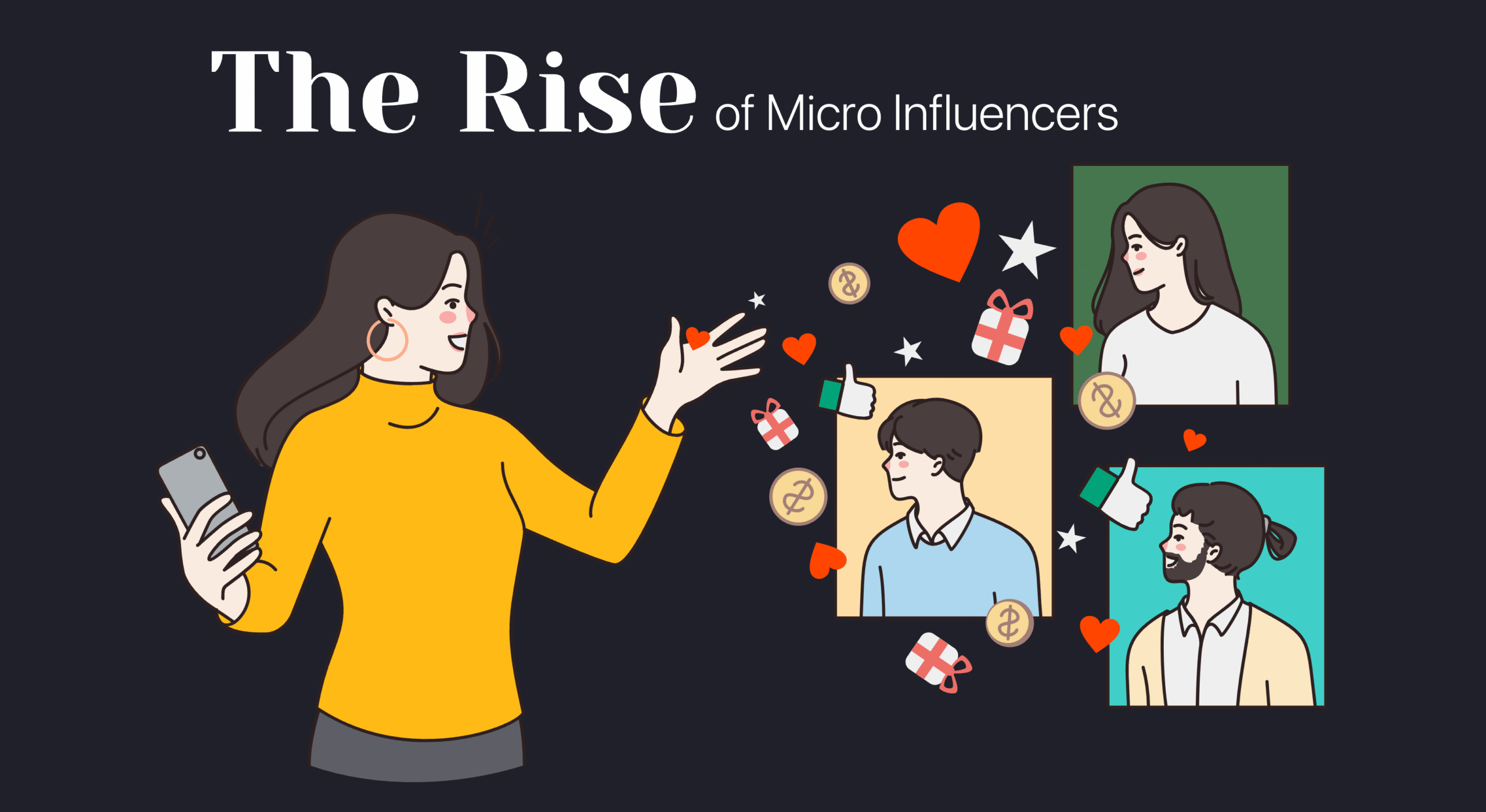The Rise of Micro-Influencer Networks in 2025: Why Small Creators Win Big
The digital world has changed — and so has the meaning of influence. Once upon a time, brands lined up behind celebrities and mega influencers with millions of followers, hoping their glittering fame would translate into sales. But in 2025, the tables have turned. The real power lies in the hands of micro-influencers — creators with smaller, highly engaged communities who drive genuine conversations, not just impressions.
In the evolving landscape of micro influencer marketing 2025, authenticity is the new currency, and small creators are the ones cashing in. They’re not just reshaping marketing strategies; they’re redefining what trust means in the digital age.
1. What Are Micro-Influencers?
Micro-influencers are digital creators with 1,000 to 100,000 followers, often operating within niche communities. From beauty and tech to sustainable living and fitness, these individuals have carved out loyal audiences who value their opinions and recommendations.
- They’re relatable, not unreachable.
- They share real-life experiences instead of scripted ads.
- They connect directly with their audience, responding to comments and messages.
This intimacy and authenticity make them far more influential than celebrity endorsements that often feel distant or transactional.
2. Why 2025 Belongs to Micro-Influencers
The shift toward micro-influencers didn’t happen overnight. As the online space became more saturated with polished, paid promotions, audiences began craving real voices and raw authenticity. In 2025, brands finally caught on — realizing that smaller creators often outperform the bigger names in engagement, conversions, and cost-effectiveness.
Key reasons why micro influencer marketing 2025 is booming:
- Higher Engagement: Micro-influencers generate 3–5x more engagement than macro influencers.
- Authentic Storytelling: Their content feels like a recommendation from a friend.
- Affordable Partnerships: They fit into almost any brand budget.
- Targeted Reach: They cater to niche audiences, resulting in better ROI.
In short, brands are done chasing reach; they’re now chasing relationships.
3. The Rise of Micro-Influencer Networks
Here’s where things get exciting. Instead of partnering with one big influencer, brands in 2025 are building micro-influencer networks — groups of small creators working collectively to amplify brand stories.
These networks bring unmatched advantages:
- Diverse Audiences: Reach multiple regions, demographics, and interests at once.
- Community Impact: When several trusted creators promote the same brand, credibility skyrockets.
- Scalability: Campaigns can easily expand by adding more creators.
The collective power of micro-influencer networks allows brands to grow organically, spreading awareness like ripples in a digital pond — one authentic post at a time.
4. Technology & AI: The Game Changer
In 2025, technology is fueling micro influencer marketing like never before. Artificial Intelligence (AI) and advanced analytics are helping brands identify the right creators and measure the real impact of collaborations.
AI-driven tools now:
- Analyze audience behavior to match brands with ideal influencers.
- Track sentiment and engagement quality beyond vanity metrics.
- Automate campaign management and reporting.
This marriage of creativity and data means influencer marketing is no longer a guessing game — it’s a science backed by measurable insights. Brands know exactly where their money goes, and creators get fairer deals based on transparent performance metrics.
5. Why Audiences Trust Micro-Influencers
The biggest reason behind the rise of micro influencer marketing 2025 is simple: trust.
People don’t just follow micro-influencers for content; they follow them for connection. These creators often share real struggles, daily routines, and personal victories. They’re not celebrities promoting ten brands a week — they’re your digital friend recommending something that genuinely works.
Consumers trust them because:
- Their content is raw and real, not heavily produced.
- They engage directly — replying to comments, answering questions.
- They maintain authentic relationships with followers.
That authenticity turns influence into impact. When a micro-influencer says a product works, people believe it — and act on it.
6. The Brand Perspective: Why Small Creators Deliver Big Wins
From startups to established enterprises, every brand now recognizes the value of smaller creators. Here’s why partnering with micro-influencers makes strategic sense:
- Better ROI: Lower cost per post and higher conversions mean more value for money.
- Long-Term Partnerships: Brands can build lasting relationships rather than one-off endorsements.
- Localized Reach: Ideal for hyperlocal marketing or region-specific campaigns.
- Authentic Word-of-Mouth: Feels like natural storytelling instead of scripted promotion.
Brands that adopt micro influencer marketing 2025 early are already seeing results — higher engagement, improved brand loyalty, and organic growth.
7. How Micro-Influencers Shape Consumer Behavior
Consumers in 2025 are smarter than ever. They can spot inauthentic ads instantly. Micro-influencers bridge the gap between commerce and community by inspiring behavioral shifts, not just purchases.
They influence:
- Lifestyle Choices: Health, fashion, sustainability, and self-care trends.
- Brand Perception: They humanize brands through consistent storytelling.
- Consumer Loyalty: They keep audiences emotionally invested.
Instead of shouting into the void, micro-influencers spark conversations that resonate deeply — the kind that translates into real-world decisions.
8. The Future of Micro Influencer Marketing 2025 & Beyond
The future looks bright — and deeply human. Expect to see:
- Collaborative Campaigns: Micro-influencer collectives co-creating content with brands.
- AI-Powered Personalization: Campaigns tailored to micro-niches and subcultures.
- UGC (User-Generated Content) Dominance: Brands amplifying influencer-created posts as ads.
- Hybrid Influencer Models: Integration of AR, AI avatars, and real creators.
The next phase of influencer marketing won’t be about who has the loudest voice, but who builds the strongest connection. And that’s exactly where micro-influencers shine.
9. Primea Biz Insight: Driving the Micro-Influencer Revolution
At Primea Biz, we believe the future of marketing lies in human connection. As a forward-thinking digital marketing company, we help brands tap into the potential of micro influencer marketing 2025 through:
- Data-driven influencer discovery.
- Customized collaboration strategies.
- AI-enhanced campaign tracking and performance analytics.
Our goal is simple — help businesses grow through authenticity, creativity, and real connections. Whether you’re a startup or a global enterprise, micro-influencers can bring your story to life in ways traditional ads never could.
Primea Biz bridges the gap between brands and communities — because in 2025, the power of influence doesn’t come from fame, but from trust.
Conclusion: Small Creators, Big Impact
The digital marketing landscape of 2025 belongs to those who understand the art of connection. Micro-influencers may not have millions of followers, but they hold something far more valuable — credibility.
As micro influencer marketing 2025 continues to evolve, brands that prioritize authenticity will win. And those who partner with genuine creators will see not just clicks or likes, but long-term customer relationships.
In a world overflowing with content, it’s the quiet, honest voices that rise above the noise. The age of micro-influencers isn’t coming — it’s already here, reshaping the future one genuine post at a time.



